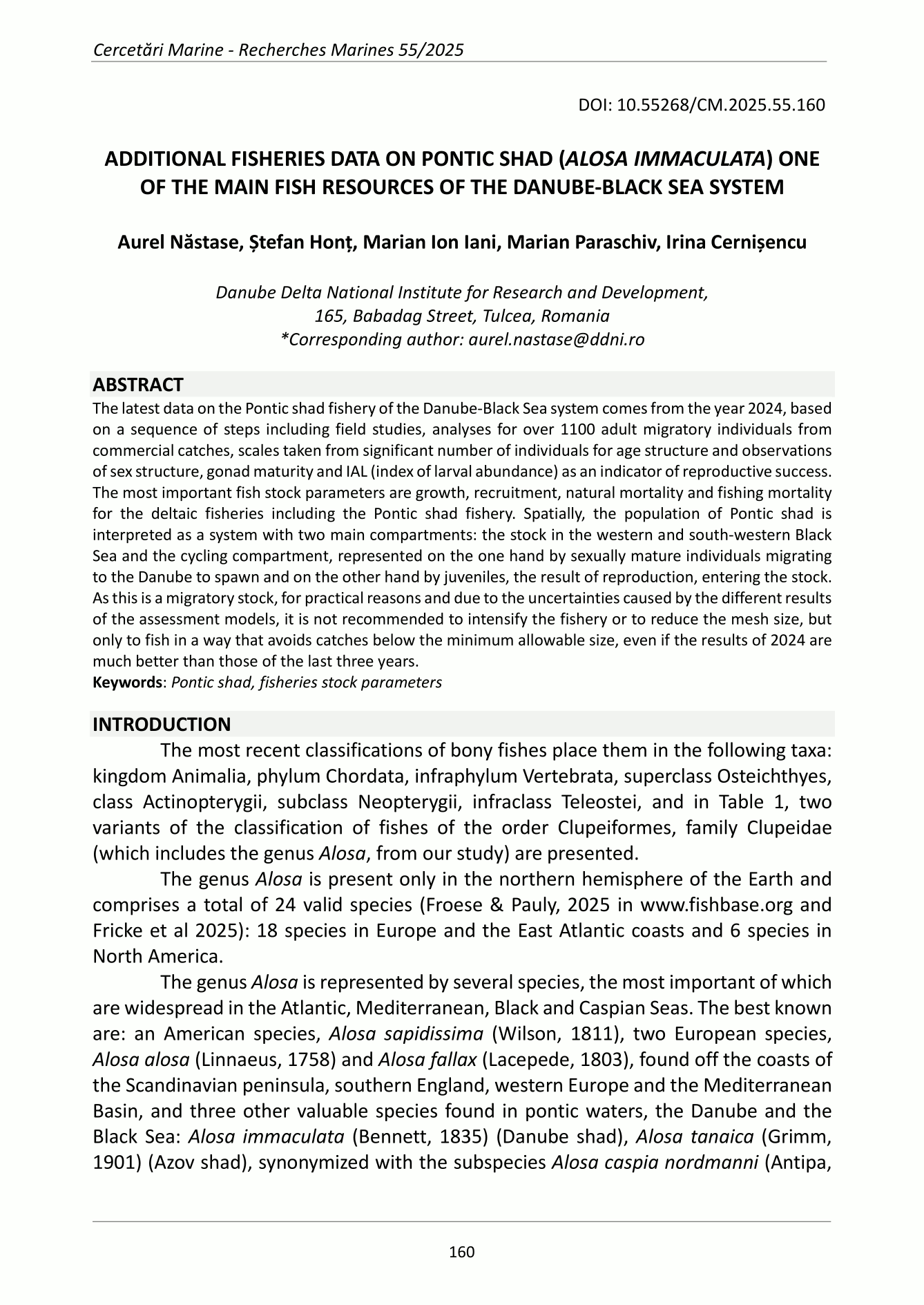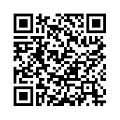ADDITIONAL FISHERIES DATA ON PONTIC SHAD (ALOSA IMMACULATA) ONE OF THE MAIN FISH RESOURCES OF THE DANUBE-BLACK SEA SYSTEM
DOI:
https://doi.org/10.55268/CM.2025.55.160Keywords:
Pontic shad, fisheries stock parametersAbstract
The latest data on the Pontic shad fishery of the Danube-Black Sea system comes from the year 2024, based
on a sequence of steps including field studies, analyses for over 1100 adult migratory individuals from
commercial catches, scales taken from significant number of individuals for age structure and observations
of sex structure, gonad maturity and IAL (index of larval abundance) as an indicator of reproductive success.
The most important fish stock parameters are growth, recruitment, natural mortality and fishing mortality
for the deltaic fisheries including the Pontic shad fishery. Spatially, the population of Pontic shad is
interpreted as a system with two main compartments: the stock in the western and south-western Black
Sea and the cycling compartment, represented on the one hand by sexually mature individuals migrating
to the Danube to spawn and on the other hand by juveniles, the result of reproduction, entering the stock.
As this is a migratory stock, for practical reasons and due to the uncertainties caused by the different results
of the assessment models, it is not recommended to intensify the fishery or to reduce the mesh size, but
only to fish in a way that avoids catches below the minimum allowable size, even if the results of 2024 are
much better than those of the last three years.

Downloads
Published
How to Cite
Issue
Section
License

This work is licensed under a Creative Commons Attribution-NonCommercial-NoDerivatives 4.0 International License.
This is an open access journal, which means that all content is freely available without charge to the user or his/her institution. Users are allowed to read, download, copy, distribute, print, search, or link to the full texts of the articles, or use them for any other lawful purpose, without asking prior permission from the publisher or the author. This is in accordance with the BOAI definition of open access.






